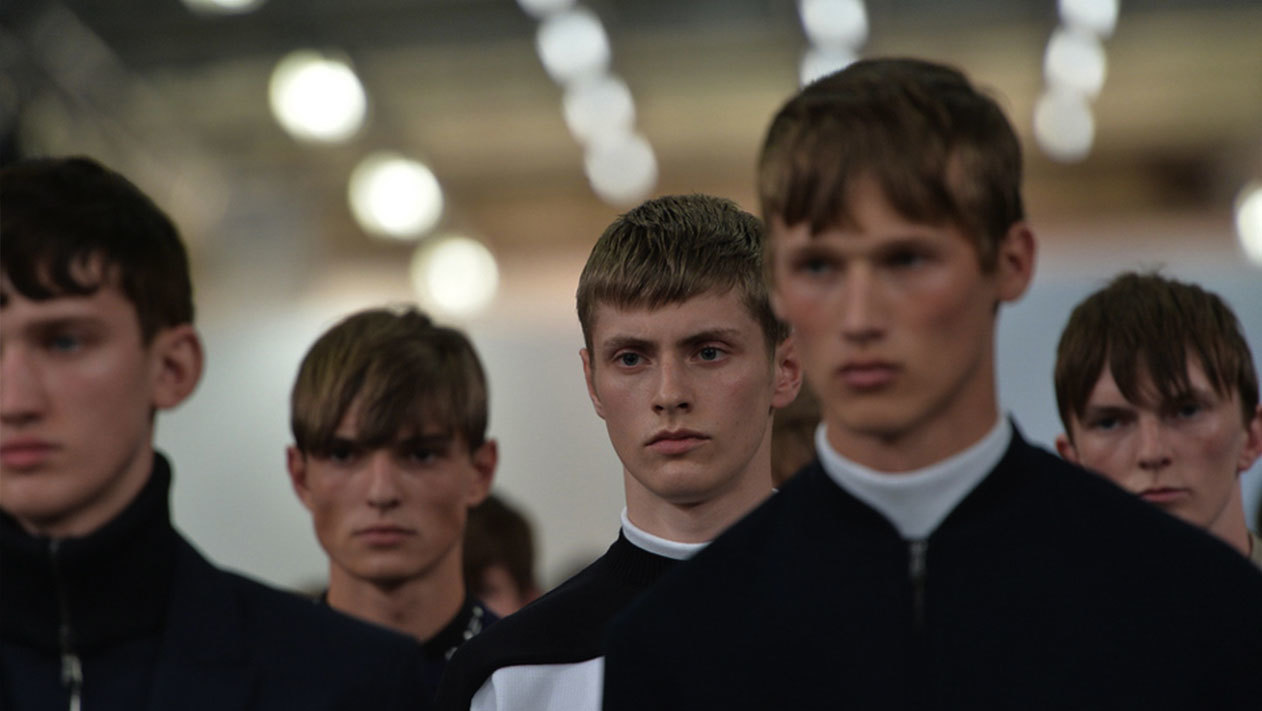It’s a confusing time to dress for the American male. Barack Obama is wearing beige suits. Pharrell is wearing beige hats. Shia LaBeouf is wearing beige paper bags. Jerry Seinfeld is a style icon. Women want to both copy and caress Jared Leto’s hair.
Meanwhile, there’s no fashion week to explain what’s right and wrong. At no moment do America’s style elite gather on their home turf to selfie for the edification of the masses. When they do, they’re in Europe. No wonder Ugly Christmas sweaters exist!
This December, the Council on Fashion Designers of America confirmed plans to remedy such problems: a dedicated New York Men’s Fashion Week, launching in July, pending sponsorship. The event will be separate from the September and February shows, which currently feature mostly womenswear. The news begs the question: will this be just another pit stop on the global fashion week trek? Or could it also transform the New York menswear scene, historically the white button-down of the fashion world, into something more experimental and culturally relevant?
The thing is, if the menswear landscape is confusing, it’s because it’s already more experimental and culturally relevant than it’s been in a long time. “In the past, it was a very limited group of people who were interested,” New York-based Patrik Ervell, who currently shows with the women’s collections in New York, told me. “Now it’s a phenomenon.” Sales in the industry are growing at a faster rate than womenswear. Style subcultures that a decade ago might have lived under the umbrella term “metrosexual” have their own classifications, from lumbersexual to fuccboi to health goth.
If anything, a NYMFW—say that five times fast and get used to it—will reflect existing trends more than spark new ones. “It definitely signifies more interest in men’s fashion as media, as content,” said Scott Sternberg of Band of Outsiders. It will also solve a logistical conundrum. Men’s spring/summer shows occur in June in Paris, Milan, and London, and buyers visit showrooms soon after. So, when an American designer unveils a spring/summer 15 menswear collection in September in New York, it doesn’t affect the items that make it into stores.
“It’s completely backwards,” said Ervell of the time lag. Moreover, cramming men’s shows into a crowded NYFW schedule makes it harder to get media attention. “I think [not having our own fashion week] has held a lot of people back,” he noted. Thom Browne, following in the footsteps of other established American designers, moved his show to Paris in 2010. “It was very important for me to move because of their acceptance for conceptual and new ideas,” Browne said. “And from a logistical point of view, it also allows us to start production earlier.”
New York Men’s Fashion Week existed once before. It launched in 1995, when Calvin Klein, Donna Karan, Hugo Boss, and 20-some other designers collectively showed in February (back then, the womenswear shows were in April). The reviews? “Never has fashion presented a vision as dark and dreary, weak and weary as this one for men,” Amy Spindler wrote in the New York Times. “Watching the models walk down the runways was like watching men walk down the street. And no one needs to set aside four special days, indoors, under hot lights, to accomplish that.”
The reaction to 1995’s Men’s Fashion Week illustrates a long-standing stereotype surrounding menswear: It’s clothing, not Fashion. Therefore, it’s too average to merit the celebrity appearances, extravagant parties, and pricey shows normal for womenswear. Simon Doonan told the WSJ that year, “There is a non-theatrical aspect in menswear that makes it difficult to translate into a riveting show.” In 2001, the week folded after Helmut Lang decamped to Paris.
Today, it’s no longer the case that menswear isn’t Fashion. Case in point: London Collections: Men, the fashion week started in 2012 that’s known for experimental shows (e.g. giant paper-mache anime costumes from China’s Sankuanz). UK men’s fashion has always had an outsider edge, but LC:M crystallized it, creating an ecosystem for talent out of Central Saint Martins like Christopher Shannon, KTZ, and Nicomede Talavara. “To provide a platform for expression which is not solely about commercial viability is refreshing,” said Max Vanderwoude Gross, designer of Proper Gang, of LC:M. Gross currently presents in New York, and hopes a New York Men’s Fashion Week would draw from the LC:M model.
Indeed, any New York Men’s fashion week would probably contain more paper mache anime sculptures than straight-forward processions of suits. Consider the pool who might participate: the most high-profile, like Calvin Klein, or Thom Browne, already show abroad, meaning a New York Men’s Fashion Week would likely be dominated by young talent.
Of course, one of the best things about the current trend in menswear is that experimentation is more commercial. “I think menswear is most powerful when garments are visually amazing but you also want to buy them. That’s the way it’s supposed to work,” Ervell told us. And if the new New York men’s shows happen in time to influence what actually makes it to stores? Then, more than now, that’s how it will work.
Credits
Text Alice Hines
Photography Mitchell Sams
